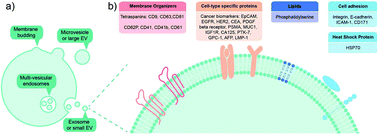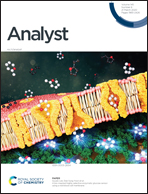Biosensing extracellular vesicles: contribution of biomolecules in affinity-based methods for detection and isolation
Abstract
Extracellular Vesicles (EVs) are lipid vesicles secreted by cells that allow intercellular communication. They are decorated with surface proteins, which are membrane proteins that can be targeted by biochemical techniques to isolate EVs from background particles. EVs have recently attracted attention for their potential applications as biomarkers for numerous diseases. This review focuses on the contribution of biomolecules used as ligands in affinity-based biosensors for the detection and isolation of EVs. Capturing biological objects like EVs with antibodies is well described in the literature through different biosensing techniques. However, since handling proteins can be challenging due to stability issues, sensors using non-denaturable biomolecules are emerging. DNA aptamers, short DNA fragments that mimic antibody action, are currently being developed and considered as the future of antibody-like ligands. These molecules offer undeniable advantages: unparalleled ease of production, very high stability in air, similar affinity constants to antibodies, and compatibility with many organic solvents. The use of peptides specific to EVs is also an exciting biochemical solution to target EV membrane proteins and complement other probes. These different ligands have been used in several types of biosensors: electrochemical, optical, microfluidic using both generic probes (targeting widely expressed membrane proteins such as the tetraspanins) and specific probes (targeting disease biomarkers such as proteins overexpressed in cancer).



 Please wait while we load your content...
Please wait while we load your content...